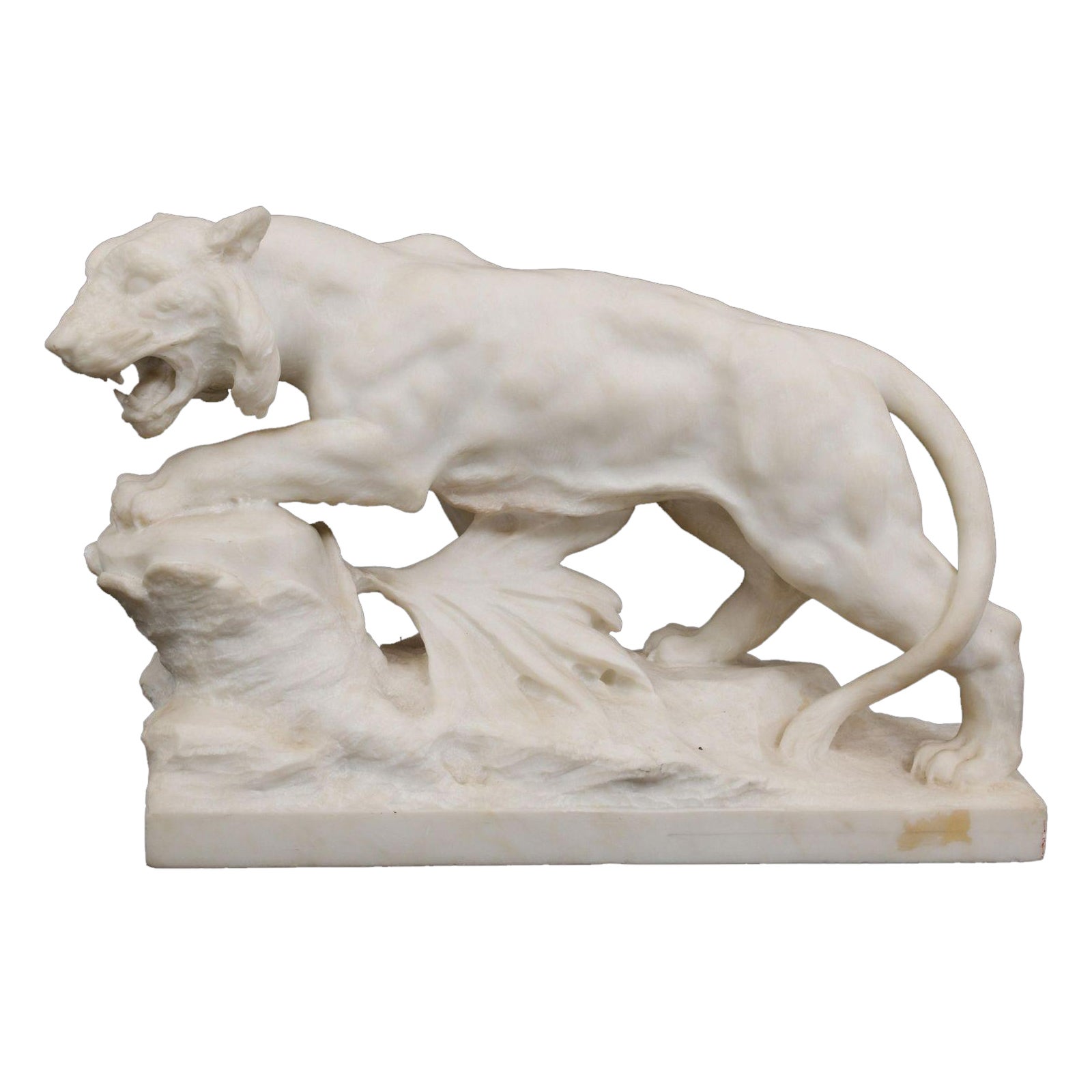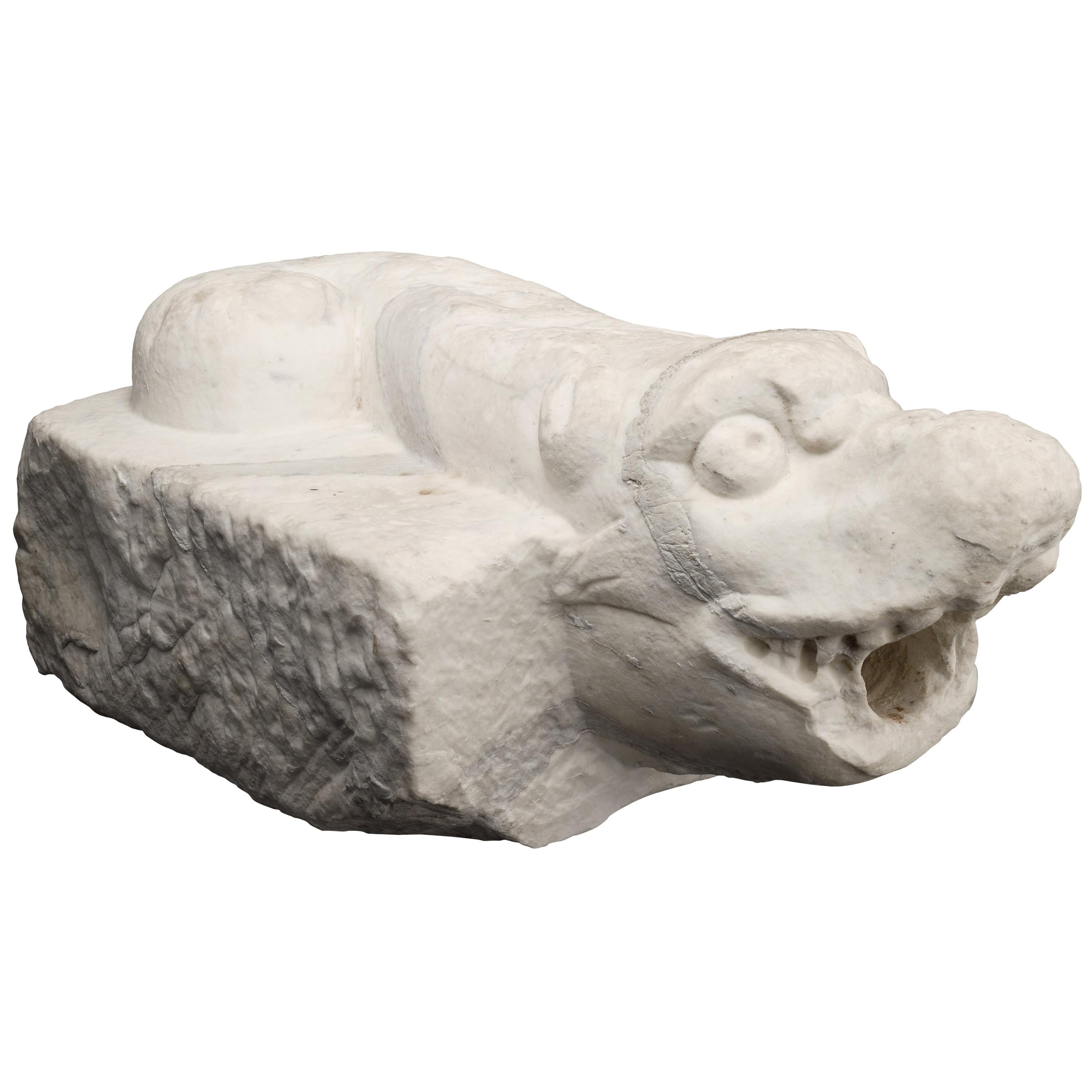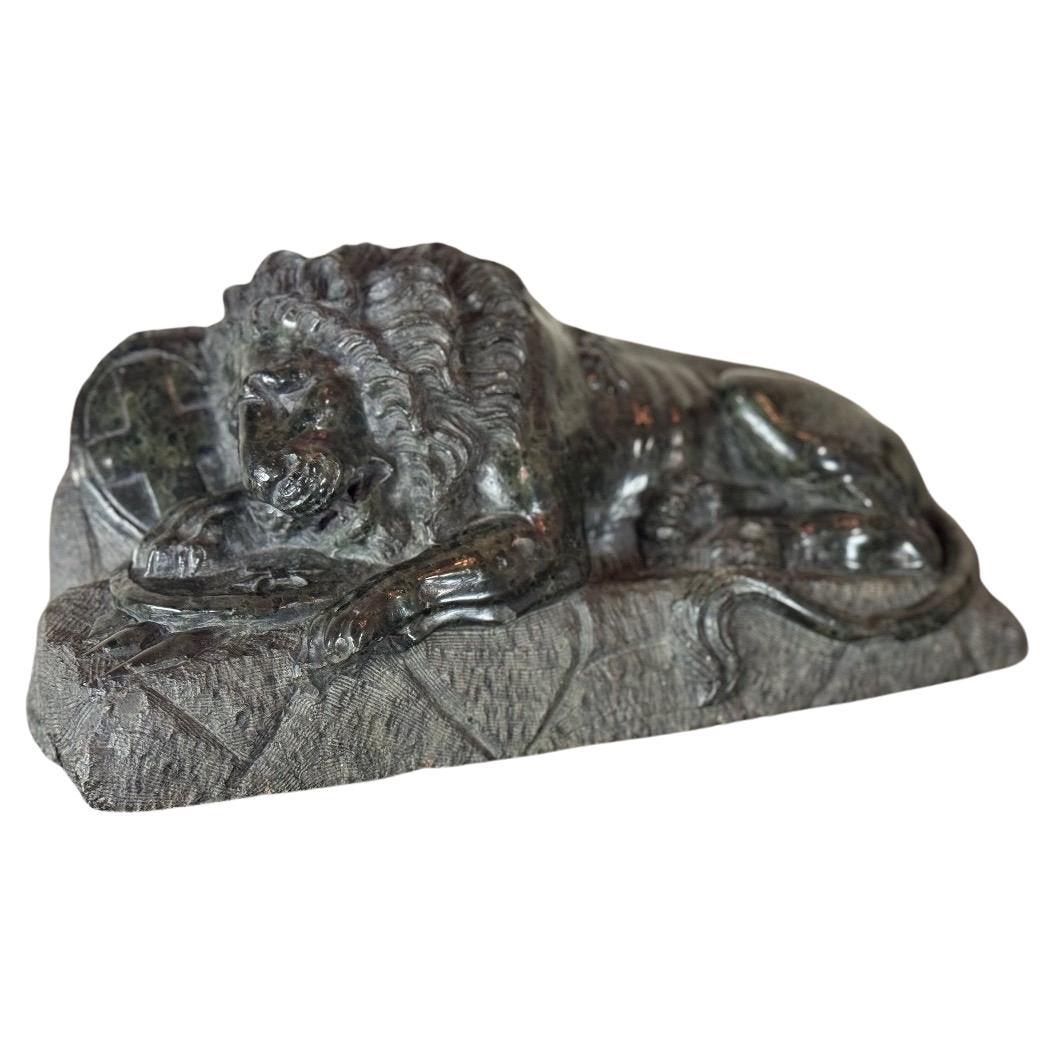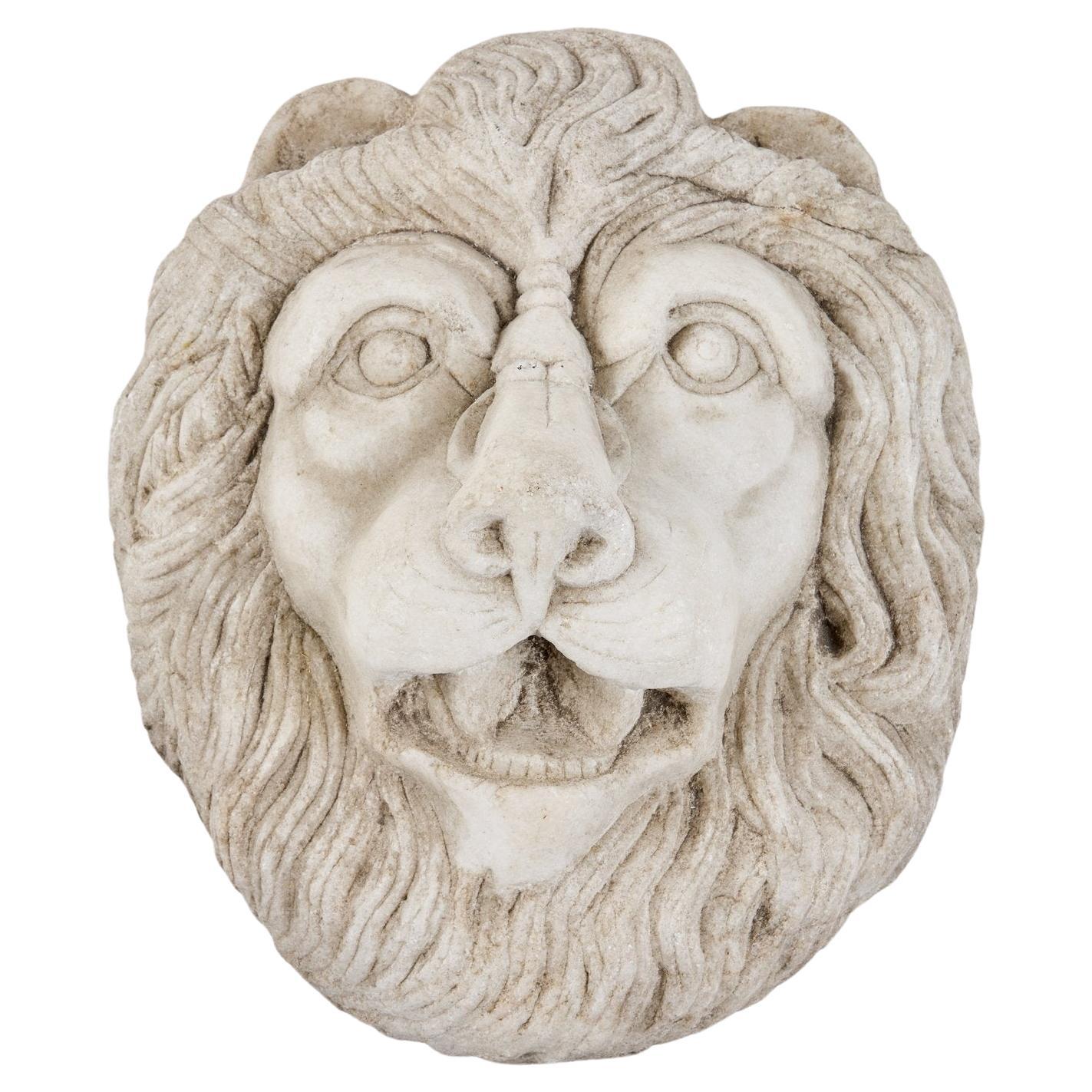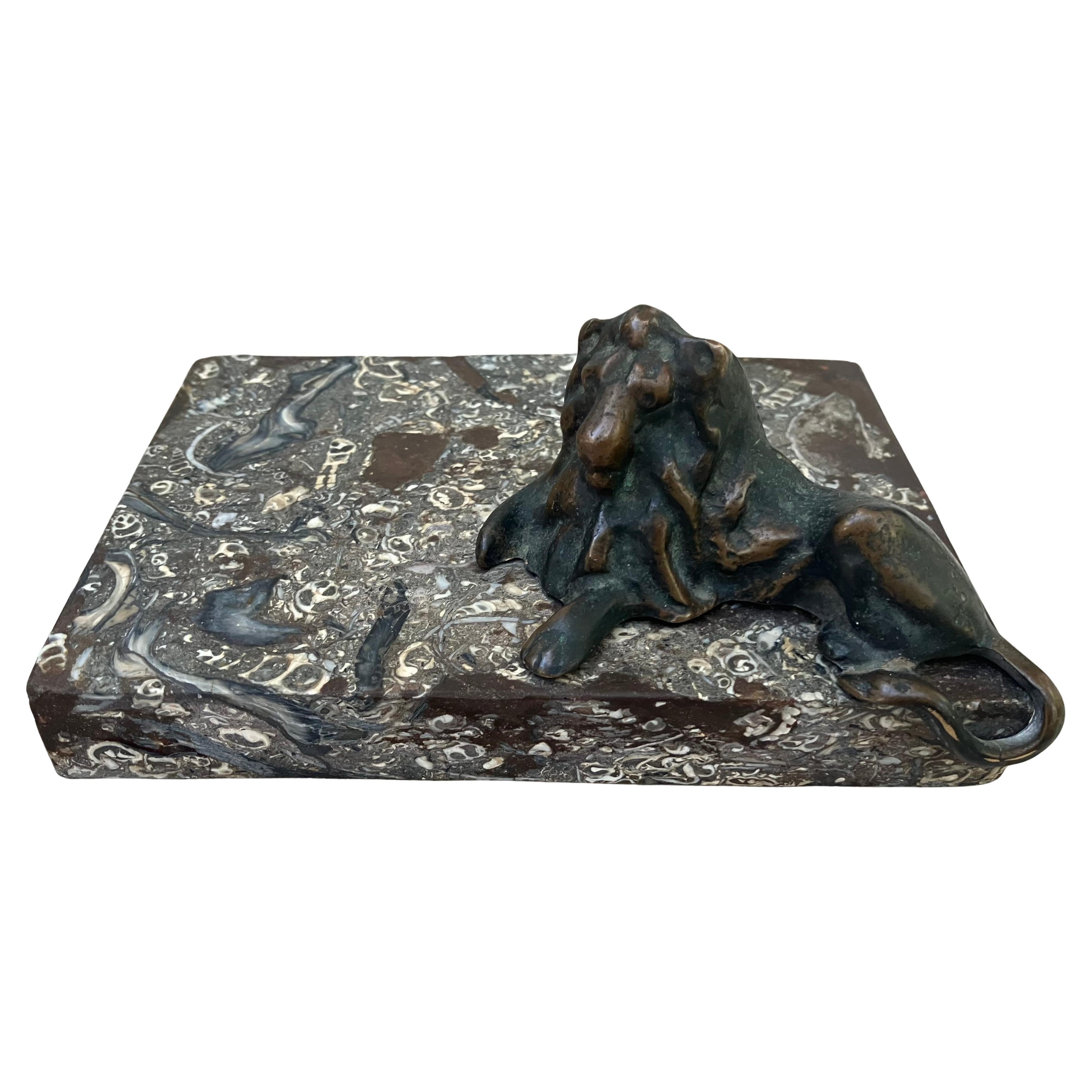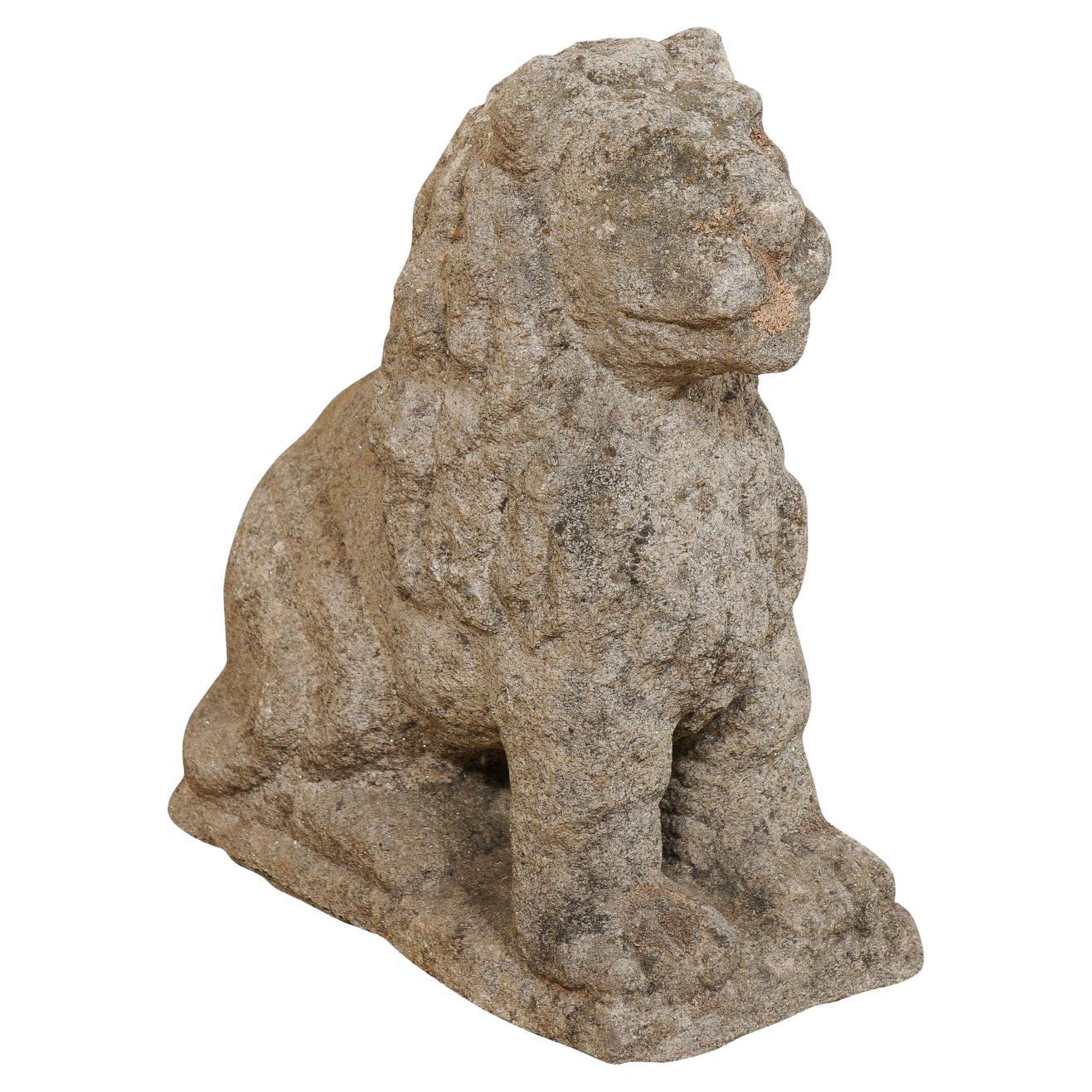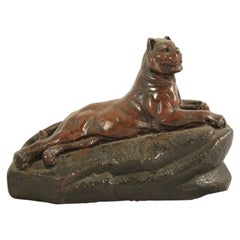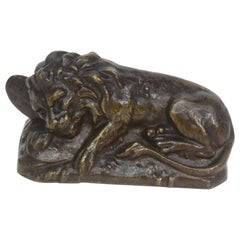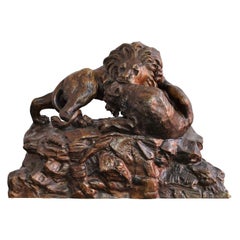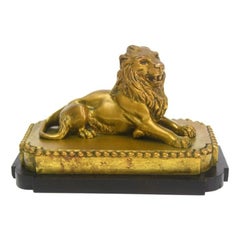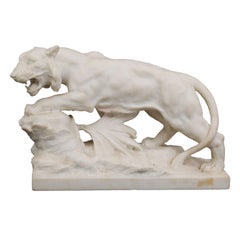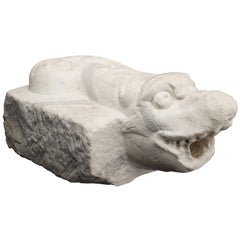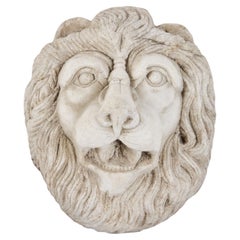Items Similar to Sculpture from the 19th Century in Direct-Cut Marble "The Lion with the Snake"
Want more images or videos?
Request additional images or videos from the seller
1 of 5
Sculpture from the 19th Century in Direct-Cut Marble "The Lion with the Snake"
$4,547.08
£3,352.05
€3,800
CA$6,291.35
A$6,826.43
CHF 3,621.30
MX$83,828.07
NOK 44,783.67
SEK 42,410.08
DKK 28,932.73
About the Item
19th century sculpture in direct-cut marble "The lion with the snake" from the Tuileries garden, the work from the Tuileries garden was executed by Antoine Louis Barye dimension height 37 cm width 48 cm depth 26 cm
Additional information:
Material: Rock
- Dimensions:Height: 14.57 in (37 cm)Width: 18.9 in (48 cm)Depth: 10.24 in (26 cm)
- Materials and Techniques:
- Period:
- Date of Manufacture:19th Century
- Condition:
- Seller Location:Marseille, FR
- Reference Number:Seller: n°93471stDibs: LU4057329486882
About the Seller
4.4
Vetted Professional Seller
Every seller passes strict standards for authenticity and reliability
Established in 1999
1stDibs seller since 2018
81 sales on 1stDibs
Typical response time: 17 hours
- ShippingRetrieving quote...Shipping from: Marseille, France
- Return Policy
Authenticity Guarantee
In the unlikely event there’s an issue with an item’s authenticity, contact us within 1 year for a full refund. DetailsMoney-Back Guarantee
If your item is not as described, is damaged in transit, or does not arrive, contact us within 7 days for a full refund. Details24-Hour Cancellation
You have a 24-hour grace period in which to reconsider your purchase, with no questions asked.Vetted Professional Sellers
Our world-class sellers must adhere to strict standards for service and quality, maintaining the integrity of our listings.Price-Match Guarantee
If you find that a seller listed the same item for a lower price elsewhere, we’ll match it.Trusted Global Delivery
Our best-in-class carrier network provides specialized shipping options worldwide, including custom delivery.More From This Seller
View AllRegulates Animal Lioness Period 1900
Located in Marseille, FR
Lioness in regulates 1900 in the spirit of Barye, chocolate patina. The dimensions are 10 cm high, 16 cm wide and 8 cm deep
Additional information:
Material: Regulates.
Category
Antique 19th Century Animal Sculptures
19th Century, Lion Animal Bronze
Located in Marseille, FR
Bronze animal lion XIXth century patina medal size height 9 cm for a width of 15 cm and a depth of 9 cm.
Additional information:
Material: bronze.
Category
Antique 19th Century Animal Sculptures
Materials
Bronze
Unsigned 19th Century Animal Bronze with Lions
Located in Marseille, FR
Unsigned 19th century animal bronze with medal patina lions. No foundry mark. Dimension height 21 cm width 31 cm depth 11 cm.
Additional information:
Material: Bronze.
Category
Antique 19th Century Animal Sculptures
Materials
Bronze
Animal Bronze with Bronze Lion, Early 20th Century
Located in Marseille, FR
Bronze lion with gilded patina, early 20th century, mounted on a marble base measuring 11 cm high for a length of 17 cm and a depth of 10 cm.
Additional information:
Material: Br...
Category
20th Century Animal Sculptures
Materials
Bronze
19th Century Lion Animal Bronze by Fratin
By Christophe Fratin
Located in Marseille, FR
Lion animal bronze patina 19th century medallion signed Fratin on the terrace dimension 53 cm long 31 cm high 15 cm deep
Additional information:
Materi...
Category
Antique 19th Century Animal Sculptures
Materials
Bronze
Early 20th Grotesque Mascot
Located in Marseille, FR
Early 20th grotesque mascot.
Category
Early 20th Century French Figurative Sculptures
Materials
Bronze
You May Also Like
Joseph Frugoni Italian Marble Sculpture of Stalking Lion
Located in New York, NY
Italian marble sculpture of a lion on the hunt by Joseph Frugoni (1897-1923). In very good condition.
Category
Early 20th Century Italian Animal Sculptures
Materials
Marble
Italian Ancient Marble Sculpture Fountain, Late 16th Century
Located in Milano, IT
Sea monster
Carrara marble mouth fountain
Italy, late 16th century
It measures 13.8 x 31.5 x 18.9 in (35 x 80 x 48 cm)
State of conservation: some small evident gaps and widespread signs of wear due to outdoor exposure. The gray marks crossing it do not come from restoration, but are rather the natural veins of the marble.
This work has some morphological characteristics typically associated with the iconography of the sea monster: an elongated muzzle, sharp teeth, protruding eyes, elongated ears, and a coiled serpent's tail.
An in-depth series of studies on artistic depictions of the sea monster attempted to verify how this symbol evolved in antiquity in the European and Mediterranean contexts and how it gradually changed its image and function over time. The iconography itself is mutable and imaginative and its history is rich with cultural and artistic exchange, as well as the overlapping of ideas. This occurred so much that it is difficult to accurately pinpoint the "types" that satisfactorily represent its various developments.
However, we can try to summarize the main figures, starting from the biblical Leviathan and the marine creature that swallowed Jonah (in the Christian version, this figure was to become a whale or a "big fish", the “ketos mega”, translation of the Hebrew “dag gadol”). Other specimens ranged from the dragons mentioned in the Iliad (which were winged and had legs) to "ketos” (also from Greek mythology), the terrifying being from whose Latinized name (“cetus”) derives the word "cetacean". See J. Boardman, “Very Like a Whale” - Classical Sea Monsters, in Monsters and Demons in the Ancient and Medieval Worlds, in Papers presented in Honor of Edith Porada, Mainz am Rhein 1987, pp. 73-84).
In Italy the monster underwent yet further variations: it can be found in Etruscan art on the front of some sarcophagi representing the companion of souls, while among the Romans we find the “Pistrice” (cited by Plinio in Naturalis Historia PLIN., Nat., II 9, 8 and by Virgilio in Eneide: VERG., Aen., III, 427), which appeared in the shape of a stylized hippocampus or a very large monstrous cetacean and evolved into a hideous being with a dragon's head and long webbed fins.
During the Middle Ages, the sea monster was the object of new transformations: at this time, it is often winged, the head is stretched like a crocodile, the front legs are often very sharp fins - sometimes real paws - until the image merges with dragons, the typical figures of medieval visionary spirituality widely found throughout Europe (on this topic and much more, see: Baltrušaitis, J., Il Medioevo fantastico. Antichità ed esotismi nell’arte gotica, Gli Adelphi 1997).
In Italy during the 15th and 16th centuries, the revival of classicism - representative of the humanistic and Renaissance periods - led to a different reading of these "creatures". Indeed, the sea monster was also to find widespread use as an isolated decorative motif, especially in numerous fountains and sculptures where dolphins or sea monsters were used as a characterizing element linked to water (on this theme see: Chet Van Duzer, Sea Monsters on Medieval and Renaissance Maps, London, The British library, 2013).
From the morphological point of view, the "sea monsters" of this period are mostly depicted as hybrid figures, in which the body of a mythological or real being (a hippocampus, a sea snake, a dolphin), is joined to a head with a rather indistinct appearance. It was usually characterized by large upright ears, an elongated snout, sharp teeth and globular, protruding eyes; a complex and indefinite figure, both from the symbolic point of view and from that of its genesis.
The work we are examining is placed as a cross between the medieval sea serpent and the Renaissance dolphin, with stylistic features which recall the snake as often used in heraldry (such as the "snake" depicted in the coat of arms of the Visconti - the lords and then dukes of Milan between 1277 and 1447 - and which, for some, may be derived from the representations of the “Pistrice” that swallowed Jonah).
In the search for sources, Renaissance cartography and in particular woodcuts should not be neglected. See for example the monsters of Olaus Magnus, from the editions of the “Historia de gentibus septentrionalibus” (“History of the peoples of the north”) and the natural histories of Conrad Gesner, Ulisse...
Category
Antique 16th Century Italian Renaissance Animal Sculptures
Materials
Carrara Marble
Serpentine Green Marble Sculpture, The Lion Of Lucerne
Located in Honnelles, WHT
Serpentine Green Marble Sculpture, The Lion Of Lucerne After Bertel Thorvaldsen Circa 1880
Category
Antique 19th Century French Louis Philippe Figurative Sculptures
Materials
Marble
Marble Lion
Located in Studio City, CA
Italian 19th century carved marble lion head for the garden. Measures Height: 16 in (40.64 cm)Width: 14 in (35.56 cm)Depth: 6 in (15.24 cm)
Category
Antique 1890s Italian Animal Sculptures
Materials
Marble
$1,800
Bronze Lion on Marble Base Sculpture
Located in New York, NY
Bronze lion on marble base sculpture. 19th century recumbent bronze lion poised at edge of blue grey and brown Orthoceras Marble slab pedestal for desk accessory/ paperweight. Contin...
Category
Antique 19th Century European Animal Sculptures
Materials
Marble, Bronze
18th Century Hand-Carved Stone Lion Garden Statue from Europe
Located in Atlanta, GA
A European carved stone lion garden statue from the 18th century. This antique sculpture from Europe has been hand-carved in the image of a m...
Category
Antique 18th Century European Statues
Materials
Stone
More Ways To Browse
Snake Sculptures
Lion Marble Sculpture
Lion And Snake
Brass Cat
Mene Bronze Sculpture
Naturalistic Furniture
White Ceramic Animals
Barye Bronze Sculptures
Ceramic Fish Sculptures
Dog Figurines
French Rabbit
Large Brass Animals
Metal Horse Sculptures
Rooster Pair
Vintage Bird Pottery
Dog Carved Sculpture
Iron Door Stops
Mid Century Giraffe
